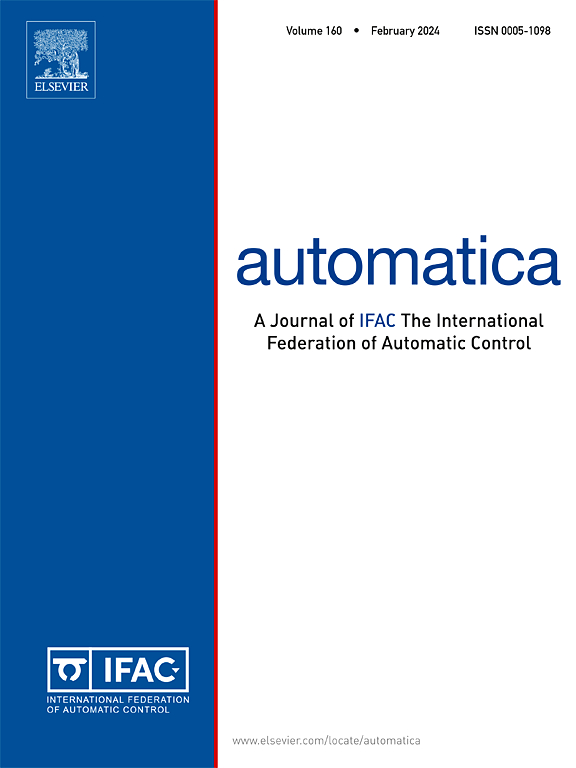Structure identification of time delay polynomial Hammerstein models
IF 5.9
2区 计算机科学
Q1 AUTOMATION & CONTROL SYSTEMS
引用次数: 0
Abstract
The structure identification of block-oriented nonlinear models is of great significance; however, the research in this area is still far from mature. This paper focuses on the structure identification of time delay Hammerstein models with polynomial nonlinearity. Identification involves estimating the order of the linear part, the order of the polynomial function, and the time delay. The proposed algorithm is derived by analyzing specific information matrices, which are based on sufficient excitation conditions. Additionally, this paper investigates the structure identification of the Hammerstein systems with arbitrary nonlinearities under the influence of measurement noise. An improved criterion is proposed to identify the structure of the linear part, which can also offer important information for determining the order of the polynomial function. Simulation experiments validate the effectiveness of the proposed algorithm.
时滞多项式Hammerstein模型的结构辨识
面向块的非线性模型的结构识别具有重要意义;然而,这方面的研究还很不成熟。研究了多项式非线性时滞Hammerstein模型的结构辨识问题。辨识包括估计线性部分的阶数、多项式函数的阶数和时间延迟。该算法是通过分析特定的信息矩阵推导出来的,该信息矩阵基于充分的激励条件。此外,本文还研究了测量噪声影响下具有任意非线性的Hammerstein系统的结构辨识问题。提出了一种改进的判别线性部分结构的判据,为确定多项式函数的阶数提供了重要的信息。仿真实验验证了该算法的有效性。
本文章由计算机程序翻译,如有差异,请以英文原文为准。
求助全文
约1分钟内获得全文
求助全文
来源期刊

Automatica
工程技术-工程:电子与电气
CiteScore
10.70
自引率
7.80%
发文量
617
审稿时长
5 months
期刊介绍:
Automatica is a leading archival publication in the field of systems and control. The field encompasses today a broad set of areas and topics, and is thriving not only within itself but also in terms of its impact on other fields, such as communications, computers, biology, energy and economics. Since its inception in 1963, Automatica has kept abreast with the evolution of the field over the years, and has emerged as a leading publication driving the trends in the field.
After being founded in 1963, Automatica became a journal of the International Federation of Automatic Control (IFAC) in 1969. It features a characteristic blend of theoretical and applied papers of archival, lasting value, reporting cutting edge research results by authors across the globe. It features articles in distinct categories, including regular, brief and survey papers, technical communiqués, correspondence items, as well as reviews on published books of interest to the readership. It occasionally publishes special issues on emerging new topics or established mature topics of interest to a broad audience.
Automatica solicits original high-quality contributions in all the categories listed above, and in all areas of systems and control interpreted in a broad sense and evolving constantly. They may be submitted directly to a subject editor or to the Editor-in-Chief if not sure about the subject area. Editorial procedures in place assure careful, fair, and prompt handling of all submitted articles. Accepted papers appear in the journal in the shortest time feasible given production time constraints.
 求助内容:
求助内容: 应助结果提醒方式:
应助结果提醒方式:


